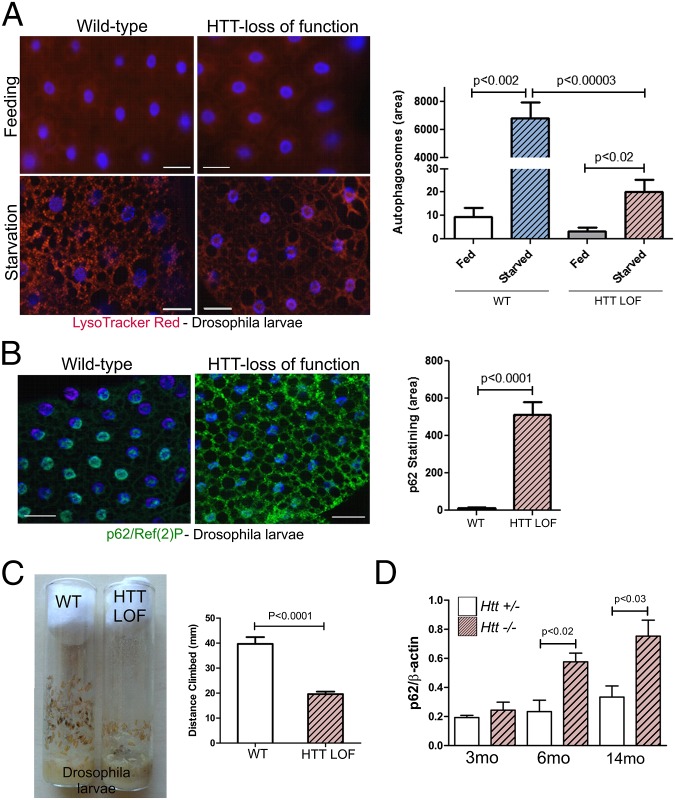Fig. 1.
Loss of HTT function in Drosophila larvae or conditional knockout of HTT in the mouse CNS inhibits autophagy. (A) Loss of Drosophila HTT function results in an inhibition of autophagy in starved larvae as shown by significant reduction in numbers of acidic vesicles monitored by LysoTracker Red in fat body cells. (Scale bars, 30 μm.) (B) Drosophila p62/SQSTM1, Ref(2)P, significantly accumulates in the cytoplasm of fat body cells with HTT LOF in starved larvae. (Scale bars, 30 μm.) (C) Just before pupariation, the locomotion of the HTT LOF larvae exhibit a statistically significant climbing deficit. (D) Httflox/−;nestin-cre-tg CNS conditional Htt knockout mice significantly accumulate p62/SQSTM1 in the striatal insoluble fraction with aging. n = 3 for each genotype.

